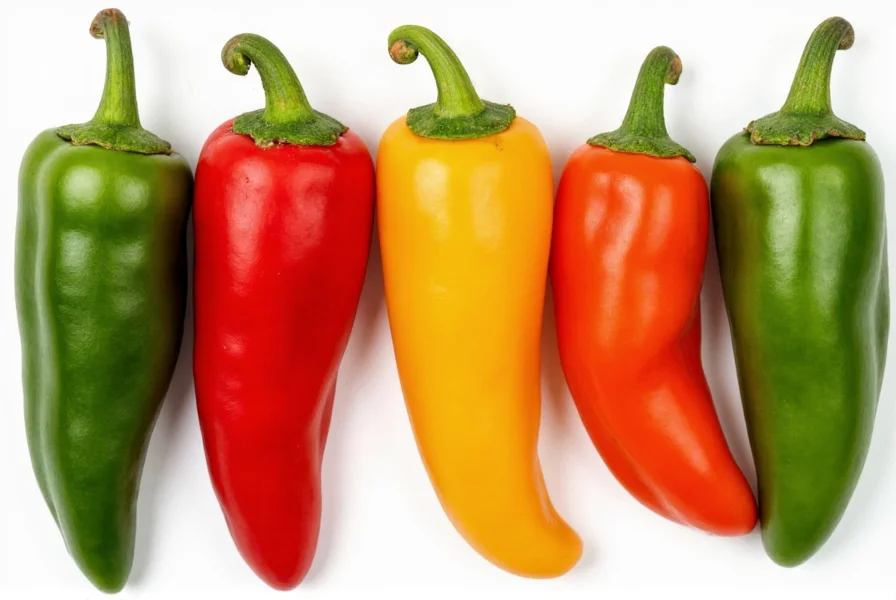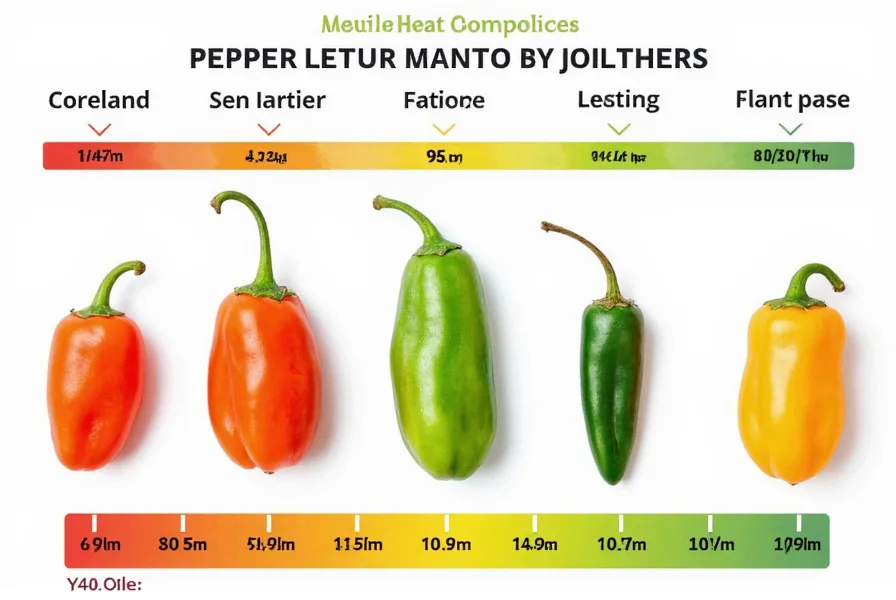When exploring hatch pepper scoville measurements, it's essential to understand that "Hatch" refers to peppers grown in New Mexico's Hatch Valley rather than a single pepper variety. This regional designation encompasses multiple New Mexico chile varieties that share similar growing conditions but differ in heat intensity.
Understanding Hatch Peppers and Their Heat Profile
Hatch peppers have gained popularity across the United States for their distinctive flavor profile that combines mild heat with earthy, slightly sweet notes. Unlike standardized commercial peppers, Hatch varieties exhibit natural heat variation due to their agricultural origins in the Hatch Valley of New Mexico, where soil composition, elevation, and climate create unique growing conditions.
The Scoville scale, developed by pharmacist Wilbur Scoville in 1912, measures capsaicin concentration—the compound responsible for pepper heat. Modern testing uses high-performance liquid chromatography (HPLC) for precise measurement, though results are still expressed in Scoville Heat Units for consumer familiarity.
Hatch Pepper Varieties and Their Scoville Ratings
Understanding the hatch green chile scoville units requires examining specific varieties grown in the Hatch Valley. Each cultivar has its own heat profile, influenced by both genetics and environmental factors:
| Hatch Pepper Variety | Scoville Heat Units | Heat Level Comparison |
|---|---|---|
| Big Jim | 500-700 SHU | Milder than banana pepper |
| Sandia | 500-2,500 SHU | Similar to poblano, milder than jalapeño |
| Joe E. Parker | 1,500-2,500 SHU | Mild jalapeño level |
| Lumbre | 4,000-8,000 SHU | Approaching cayenne pepper heat |

Factors Influencing Hatch Pepper Heat Levels
Several elements affect the hatch pepper heat level comparison between different harvests and varieties:
- Maturation stage: Green Hatch peppers (harvested early) tend to be milder than fully ripened red varieties
- Water stress: Drier growing conditions increase capsaicin production
- Soil composition: Mineral content in Hatch Valley soil contributes to distinctive flavor profiles
- Temperature fluctuations: Greater day-night temperature differences intensify heat
- Harvest timing: Later-season peppers often develop more heat
These variables explain why consumers might experience different heat levels when purchasing new mexico hatch pepper scoville rating labeled products from different sources or harvest years.
Comparing Hatch Peppers to Common Varieties
Understanding where Hatch peppers fall on the Scoville scale requires context. The following comparison helps visualize hatch chile vs jalapeno heat and other common peppers:
| Pepper Type | Scoville Heat Units | Relative Heat to Hatch |
|---|---|---|
| Bell Pepper | 0 SHU | 0-100% milder |
| Hatch Pepper (average) | 1,000-8,000 SHU | Baseline |
| Jalapeño | 2,500-8,000 SHU | Similar to hotter Hatch varieties |
| Serrano | 10,000-23,000 SHU | 2-5x hotter than average Hatch |
| Cayenne | 30,000-50,000 SHU | 5-10x hotter than average Hatch |

Culinary Applications Based on Heat Level
The moderate heat range of most Hatch varieties makes them exceptionally versatile in cooking. Chefs appreciate how the mild hatch pepper varieties provide flavor complexity without overwhelming heat. When selecting Hatch peppers for recipes, consider these guidelines:
- Mild varieties (Big Jim, Sandia): Ideal for stuffed peppers, sauces, and dishes where pepper flavor should shine without significant heat
- Medium varieties (Joe E. Parker): Perfect for salsas, stews, and roasted pepper applications where subtle heat enhances other flavors
- Hotter varieties (Lumbre): Best used sparingly in hot sauces, spicy dips, or when a noticeable heat element is desired
Roasting Hatch peppers significantly alters their flavor profile, reducing perceived heat while enhancing sweetness and smokiness. This technique makes even the hotter varieties more approachable for those sensitive to spice.
Seasonal Availability and Selection Tips
True Hatch peppers have a limited harvest season from late summer through early fall (August-October). During this period, fresh Hatch peppers appear in markets across the United States. When selecting peppers, remember that:
- Smaller peppers often indicate higher heat levels
- Thinner walls typically correlate with more intense flavor
- Deep green color suggests earlier harvest and milder heat
- Reddening peppers have matured longer and generally pack more heat
For those seeking consistent hatch pepper scoville measurements year-round, frozen and canned Hatch products maintain quality while offering predictable heat levels. Reputable producers often label products with specific heat indicators to help consumers select appropriate spice intensity.
What is the average Scoville rating for Hatch green chile peppers?
The average Scoville rating for Hatch green chile peppers ranges from 1,000 to 8,000 SHU, with most common varieties falling between 1,500-4,000 SHU. Big Jim varieties are among the mildest (500-700 SHU), while Lumbre can reach up to 8,000 SHU.
How does Hatch pepper heat compare to jalapeños?
Hatch peppers generally range from milder to similar in heat to jalapeños. While jalapeños typically measure 2,500-8,000 SHU, many Hatch varieties (like Sandia and Joe E. Parker) fall within this range. However, milder Hatch varieties like Big Jim are significantly less hot than most jalapeños.
Why do Hatch peppers have varying heat levels?
Hatch peppers exhibit varying heat levels due to multiple factors including specific variety genetics, maturation stage (green vs. red), water stress during growth, soil composition in the Hatch Valley, temperature fluctuations, and harvest timing. This natural variation is characteristic of regionally grown peppers.
Which Hatch pepper variety is the mildest?
The Big Jim variety is generally considered the mildest Hatch pepper, typically measuring between 500-700 Scoville Heat Units. This makes it significantly milder than many other common chili peppers and ideal for those who prefer flavor without significant heat.
Does roasting Hatch peppers reduce their heat level?
Roasting Hatch peppers doesn't actually reduce their capsaicin content, but it does transform their flavor profile, making the heat feel less intense. The caramelization process enhances sweetness and creates smoky notes that balance the spiciness, resulting in a more complex flavor where the heat becomes more integrated rather than sharp.











 浙公网安备
33010002000092号
浙公网安备
33010002000092号 浙B2-20120091-4
浙B2-20120091-4